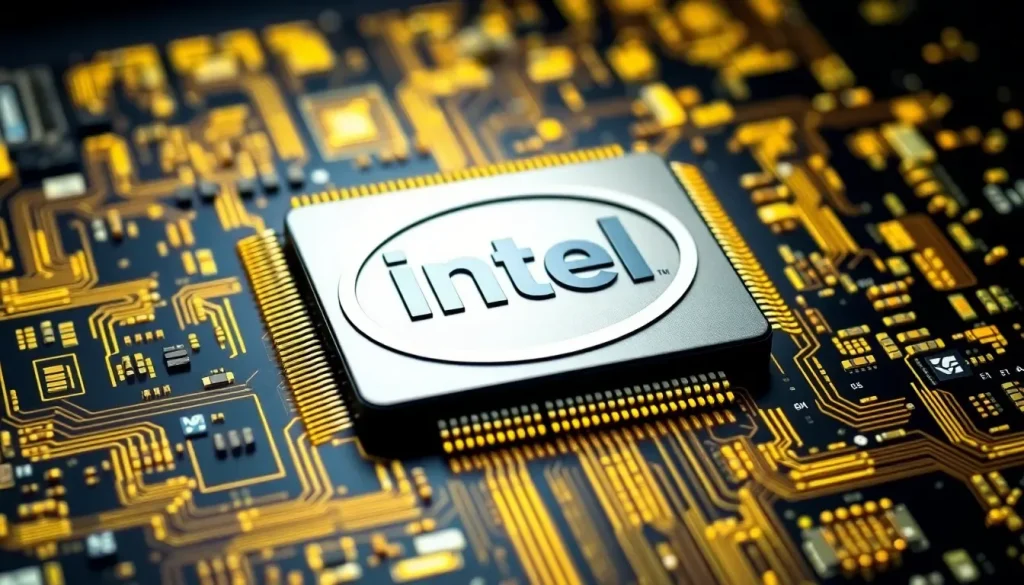NVIDIA's Investment in Intel May Fragment x86 CPU Market

The recent announcement of NVIDIA's investment in Intel to develop x86-based CPUs has sent shockwaves through the PC market, prompting reactions from major computer manufacturers. Jason Chen, the CEO of Acer, emphasized that the impact of this agreement extends beyond its implications for TSMC. It introduces complex new variables that complicate planning and supply within the PC industry. This raises a pressing question: are we going to see another rise in hardware prices?
As is often the case in the tech world, there is more than meets the eye. The statements and accompanying findings are quite clear; transitioning from two to three CPU manufacturers—or at least three options in the market with distinct software and numerous models—presents a considerable logistical challenge for companies in the sector. Consequently, these firms will likely need to adapt quickly to maintain competitiveness.
NVIDIA's investment in Intel could disrupt the CPU market due to logistical and support challenges
The primary concern centers around the increased complexity of coordinating multiple generations of x86 CPUs from more than two suppliers. Historically, managing the coexistence of Intel and AMD chips already posed a challenge in inventory management and purchasing strategies. The entry of NVIDIA into this arena, with its unique roadmap and direct collaboration with Intel, adds an extra layer of fragmentation that will force companies to rethink their supply chain strategies.
According to Chen, the industry is entering a phase where managing CPU supplies will be more difficult than ever. The need to balance differing architectures, production schedules, and business agreements among suppliers could lead to operational tensions and increased logistical costs. While the latter half of 2025 is projected to be more stable than the first, price volatility and potential component shortages are still factors that must be monitored closely.
The complexity of the situation extends beyond logistics. Companies producing everything from PCs to laptops will face a whole new set of challenges related to product sales. This includes typical issues such as support, assistance, return merchandise authorization (RMA), testing, and more. Moreover, we cannot overlook the emergence of Qualcomm with its ARM architecture, adding another layer to this three-player game.
The pressure on memory prices and potential cost increases for end users
Compounding this situation is the ongoing pressure on memory prices. Currently, demand outstrips supply, while the industry watches closely how shipments from Chinese manufacturers evolve. A rapid increase in their production could alter the market balance, shifting from a scarcity situation to one characterized by over-supply in a short timeframe, although this scenario seems unlikely at present.
Chen also indicated that the rising costs for PC and laptop components may not necessarily translate into higher prices for end products. The competition among brands and contractual agreements with suppliers limit the ability to pass these increases onto consumers. As a result, manufacturers may have to absorb some of the economic impact, adjusting their margins and optimizing internal processes, which is a silver lining for consumers.
In this new context, the collaboration between Intel and NVIDIA not only reshapes the technological landscape of the CPU and SoC x86 market but also introduces a significant operational challenge for PC manufacturers. The industry will need to adapt quickly to a more fragmented and dynamic model, where coordination between partners and efficiency in supply chain management will be crucial for maintaining competitiveness. Competition is always welcome.
Understanding the implications of a fragmented CPU market
The shift toward a fragmented CPU market can have wide-ranging implications for manufacturers and consumers alike. With multiple suppliers, brands will have to navigate:
- Increased complexity in supplier relationships: Collaboration and interaction with various partners will require more robust management strategies.
- Potential for higher operational costs: The need for more extensive logistical planning and resource allocation could drive up expenses.
- Greater difficulty in maintaining product consistency: Variability in product quality and performance across different suppliers could complicate marketing and support.
- Challenges in consumer education: As product offerings become more diverse, ensuring that consumers understand their options will become critical.
The future of CPU architecture: NVIDIA's role and market dynamics
NVIDIA's entry into the CPU market represents a significant shift in the competitive landscape. Historically known for its dominance in graphics processing units (GPUs), the company is now venturing into a new domain:
- Innovative architectures: NVIDIA is likely to leverage its expertise in parallel processing and AI to develop cutting-edge CPU architectures.
- Synergistic product offerings: The integration of GPUs and CPUs could lead to more powerful and efficient computing solutions for consumers and businesses.
- Impact on future technologies: As the industry evolves, NVIDIA's influence could reshape sectors like gaming, AI, and cloud computing.
As we look ahead, the intersection of CPU and GPU technologies could lead to exciting advancements, but it will also necessitate careful navigation of the challenges that come with increased fragmentation in the market.
Strategies for manufacturers to adapt to a changing landscape
In light of these developments, manufacturers must adopt new strategies to thrive in a more fragmented CPU market. Some key approaches include:
- Investing in supply chain transparency: Enhanced visibility can help companies manage risks and optimize inventory levels.
- Forging strategic partnerships: Collaborating with suppliers and technology partners can lead to innovative solutions and improved product offerings.
- Emphasizing customer education: Providing clear information about product choices can empower consumers and build brand loyalty.
With these strategies in mind, companies can better position themselves to navigate the complexities of the evolving CPU landscape.




Leave a Reply